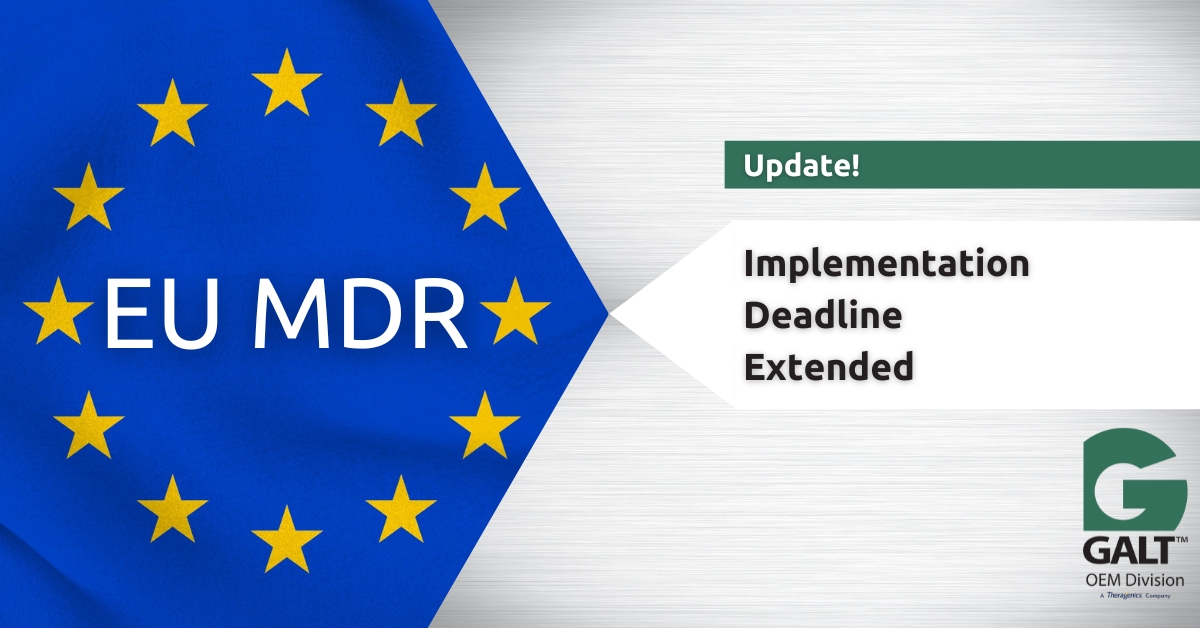What the EU MDR Extension Means for Medical Device Buyers

The EU medical device market is currently in a period of transition to a new set of regulations known as MDR – Medical Device Regulations. For a number of reasons, the transition period has been far from smooth, so the deadline for compliance with the new regulations is being extended.
The extension is being granted because of the real risk of a shortage of medical devices if the previous deadline was kept.
The following is an overview of how we got here, what is being changed, and what those changes mean for medical device buyers, including hospitals, suppliers, distributors, and other organisations that purchase medical device products.
How Did We Get Here?
The new EU MDR was first proposed in 2017 as a replacement for the previous set of regulations, the Medical Device Directive (MDD). The MDR’s implementation was delayed by a year because of Covid-19, so the new regulations took effect in May 2021. From that date, new medical devices being introduced to the market require the new MDR certification.
Crucially, the regulations also apply to legacy devices, so medical device manufacturers have to get their existing products re-certified under the new MDR.
Problems in the medical device supply chain and the war in Ukraine caused significant disruption to this effort. However, the main issue was the lack of Notified Bodies. To obtain an MDR certification for a new or legacy medical device product, manufacturers have to submit an application to a Notified Body.
All Notified Bodies also had to be re-certified, a process that takes time. In 2022, the European Union Health Commissioner, Stella Kyriakides, began talking about deadline extensions as it was realised that there wasn’t enough Notified Body capacity.
The original transition period was due to end on May 26, 2024. That deadline gave medical device manufacturers just three years to ensure compliance with the new regulations. The extension more than doubles this time period.
What Are the New MDR Transition Period Deadlines?
Higher risk, mostly class III devices will now have to comply with the new MDR by the end of 2027. Some class IIb implantable devices also have this new deadline.
Medium-risk devices, including class II devices, have to comply with the new MDR by December 31, 2028.
Class III custom-made implantable devices have a certification deadline of May 26, 2026.
What Else Is Changing?
The original plan for the implementation of MDR was to have a sell-off date. Under the sell-off date rule, products approved under the old regulatory framework had to be removed from sale by May 25, 2025. The sell-off date rule has now been dropped.
This means a medical device manufactured during the current transition period and certified under the old MDD regulations can remain on sale with no legal time limit.
What About Products in Limbo?
There is a small but important category of products that have the following characteristics:
- They currently have EU regulatory approval under the old MDD
- Their certification is expiring during the transition period, i.e., between now and the end of either 2027 or 2028, depending on the device
- Because of the problems with Notified Bodies, the manufacturer is unable to obtain an MDR certification before the old certificate expires
For this category of product, the EU has decided to extend the validity of old MDD certificates. Providing the previous certificate was valid on May 26, 2021, and has not been withdrawn by a notified body, it is automatically extended. This means the product can continue to be sold in the EU, so long as it meets the following conditions:
- The product doesn’t pose an unacceptable risk to health or safety
- The product must continue to comply with regulations
- The product must not have any significant changes made to its intended purpose or design
- The manufacturer must have started the process to transition to the new MDR certification
To meet the requirements of the last point above, manufacturers must ensure the following:
- A Quality Management System (QMS) for the product is put in place by May 26, 2024
- An application for an MDR conformity assessment must be made by May 26, 2024
- A written agreement between the manufacturer and a notified body must then be signed by September 26, 2024
What Are the Implications for Medical Device Product Buyers?
There is now more time for manufacturers to transition their legacy products to the new regulatory certification. There is also now greater supply chain certainty for medical device product buyers, at least in the short term, as certifications for medical devices issued under the previous EU regulatory system will now remain valid for longer. This reduces the risk of products becoming unavailable.
There are still issues, particularly in relation to Notified Bodies. More time is being granted as the process of obtaining certification is taking so long. The hope in the industry is that the deadline extension will also improve the EU regulatory structures that manufacturers have to work with.
For manufacturers, the advice from all experts and leaders in the industry is to take action now to start the process of getting both legacy and new medical devices MDR certified.
For medical device product buyers, the advice we outlined in a previous EU MDR blog remains valid:
- Get updates from your suppliers on their MDR readiness, particularly in relation to the products you buy
- Identify alternative suppliers for all products
- Stay up to date with MDR developments in relation to legacy devices
The main message is that the MDR deadline extension is welcome as it alleviates immediate supply chain pressures, but significant challenges remain, so it’s important to remain proactive and vigilant.
